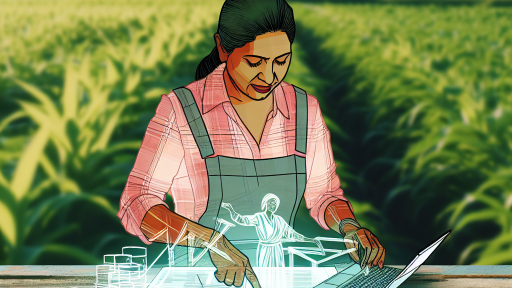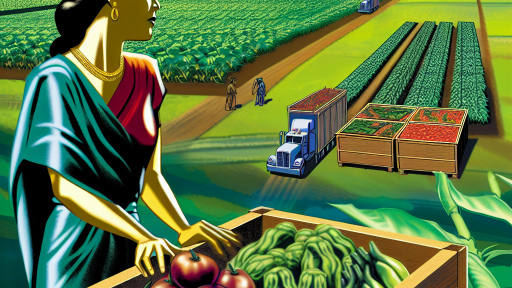Impact of Land Use Policies on Farming
Overview of Land Use Policies
Land use policies shape the way we utilize land resources.
These policies influence agricultural practices and outputs.
Governments implement land use policies to manage development sustainably.
Such policies often aim to balance urban growth with rural preservation.
Historical Context in Farming
Historically, land ownership has played a significant role in farming.
Certain policies have favored specific agricultural practices over others.
For example, the Homestead Act of 1862 promoted westward expansion.
This act encouraged farming by offering land at little to no cost.
Key Elements of Land Use Policies
Zoning regulations determine how land can be utilized.
These regulations often prioritize residential or commercial development.
In contrast, agricultural zoning protects farming lands from encroachment.
Moreover, land use policies may offer incentives for sustainable practices.
Impact on Agricultural Practices
Land use policies directly affect farming efficiency and productivity.
For instance, restrictions on certain chemicals can influence farming methods.
In addition, policies that support crop rotation enhance soil quality.
Transform Your Agribusiness
Unlock your farm's potential with expert advice tailored to your needs. Get actionable steps that drive real results.
Get StartedConsequently, these practices contribute to long-term agricultural sustainability.
Influence of Urban Development
Urban development heavily impacts nearby agricultural areas.
As cities expand, farmland is often converted to residential or commercial use.
This transition can lead to reduced agricultural outputs.
However, some policies aim to limit this negative impact.
Future of Land Use Policies
The future of land use policies will focus on sustainability.
Innovative practices will likely emerge to balance agriculture and development.
An emphasis on climate resilience will shape future policies.
Finally, community involvement will play a critical role in policy development.
Types of Land Use Policies
Zoning Regulations
Zoning regulations significantly influence farming practices.
These laws dictate how land can be utilized.
They can restrict agricultural activities in urban areas.
Moreover, they may promote farming in rural zones.
For instance, agricultural zones often offer tax incentives.
These incentives encourage farmers to maintain their operations.
In contrast, non-agricultural zoning can hinder expansion.
Therefore, understanding local zoning laws is essential for farmers.
Agricultural Subsidies
Agricultural subsidies play a crucial role in modern farming.
They provide financial assistance to farmers.
Often, these subsidies aim to stabilize crop prices.
This support enables farmers to manage production costs effectively.
Additionally, subsidies can encourage more sustainable practices.
For instance, they may promote the use of organic farming techniques.
In some cases, subsidies also support research and development.
Showcase Your Farming Business
Publish your professional farming services profile on our blog for a one-time fee of $200 and reach a dedicated audience of farmers and agribusiness owners.
Publish Your ProfileThis investment leads to more innovative farming methods.
Conservation Programs
Conservation programs aim to protect natural resources.
These initiatives help promote sustainable farming practices.
Farmers can receive funding to implement eco-friendly methods.
For example, programs often support soil and water conservation.
In addition, they may restore wildlife habitats on farmlands.
Participation in these programs can yield long-term benefits.
Farmers can enhance productivity while preserving the environment.
Ultimately, conservation efforts benefit both agriculture and nature.
Impact of Land Use Policies on Crop Yield and Agricultural Productivity
Understanding Land Use Policies
Land use policies govern how land can be utilized for various purposes.
These policies significantly influence agricultural practices and outcomes.
They can encourage or restrict farming activities based on different factors.
Effects on Crop Yield
Land use policies directly affect crop yield levels across regions.
For instance, policies promoting sustainable farming can enhance productivity.
They may provide incentives for farmers to adopt advanced techniques.
Conversely, restrictive measures can limit the areas available for cultivation.
Support for Innovation
Policies that support innovation can lead to increased crop yields.
Research funding encourages the development of new agricultural technologies.
Access to modern tools enables farmers to produce more efficiently.
Influence on Agricultural Productivity
Land use policies shape overall agricultural productivity in multiple ways.
Effective policies can streamline resource allocation among farmers.
This streamlining ensures that farming operations can be more effective.
As a result, farmers can achieve higher output with available resources.
Resource Management
Policies play a crucial role in managing water and soil resources.
For example, regulations may promote responsible water use among farmers.
This responsible use can yield better growing conditions over time.
Economic Implications
Land use policies also have significant economic implications for farmers.
They can directly influence input costs and market accessibility.
For example, favorable policies may lower land leasing costs.
Consequently, farmers can invest more in production and technology.
Market Access and Trade
Access to local and international markets is affected by these policies.
Good policies can open up new avenues for selling produce.
Conversely, lacking supportive measures can hinder market access.
Sustainability Considerations
Land use policies increasingly focus on sustainability in agriculture.
Sustainable practices support long-term agricultural viability.
Policies that promote biodiversity contribute to healthier ecosystems.
This focus can enhance both crop yield and productivity sustainably.
Learn More: Agricultural Tax Credits and Incentives Explained
Effects of Land Use Policies on Sustainable Farming Practices
Impact on Resource Allocation
Land use policies directly influence how resources are allocated to farming.
These policies can prioritize certain types of agriculture over others.
Showcase Your Farming Business
Publish your professional farming services profile on our blog for a one-time fee of $200 and reach a dedicated audience of farmers and agribusiness owners.
Publish Your ProfileConsequently, this affects the availability of land for sustainable practices.
For instance, regulations promoting organic farming can enhance resource allocation.
In contrast, policies favoring industrial agriculture may limit sustainable options.
Influence on Farming Techniques
Land use regulations shape the techniques farmers adopt.
Policies encouraging conservation tillage promote soil health and reduce erosion.
On the other hand, policies that support monocropping can degrade soil quality.
Furthermore, land incentives can lead farmers to adopt environmentally friendly technologies.
Overall, effective policies encourage sustainable farming practices.
Effects on Crop Diversity
Land use policies can impact the diversity of crops farmers grow.
Policies that support crop rotation can enhance biodiversity.
However, regulations promoting cash crops may limit diverse planting decisions.
Encouraging mixed farming systems can lead to better ecological outcomes.
Sustaining crop diversity helps mitigate pests and diseases effectively.
Financial Incentives and Disincentives
Policies can provide financial incentives for sustainable practices.
For example, grants for implementing eco-friendly practices are beneficial.
Conversely, lack of financial support can discourage sustainable farming.
Additionally, taxation on harmful practices can encourage eco-friendly alternatives.
Financial tools play a crucial role in promoting sustainable agriculture.
Long-term Sustainability and Future Generations
Good land use policies foster long-term sustainability for agricultural landscapes.
Such policies ensure future generations inherit viable farming land.
Furthermore, they provide a framework for protecting natural resources.
Therefore, sustainable land use can address both current and future food needs.
Responsible planning today leads to resilient agricultural systems tomorrow.
Explore Further: Strategies to Utilize Farm Financial Aid Wisely
Role of Government and Local Authorities in Shaping Land Use Policies
Formulating Regulations and Guidelines
Government bodies establish essential land use regulations.
These regulations influence agricultural development and sustainability.
Local authorities implement specific zoning laws that affect farmers.
They also offer guidelines for soil and water management practices.
Incentivizing Sustainable Practices
Governments provide financial incentives for sustainable farming.
Grant programs encourage farmers to adopt eco-friendly technologies.
Additionally, tax breaks promote conservation-focused land use.
Collaborating with Stakeholders
Effective policies arise from collaboration with farmers and communities.
Local authorities engage stakeholders in policy development.
This collaboration fosters a sense of ownership and accountability.
Monitoring and Enforcement
Governments monitor land use practices through regular assessments.
They enforce compliance with established land use policies.
Penalties for violations ensure adherence to regulations.
Adapting to Changing Needs
Land use policies must evolve to meet new challenges.
Climate change impacts necessitate adaptive policy frameworks.
Furthermore, population growth increases demands on agricultural land.
Showcase Your Farming Business
Publish your professional farming services profile on our blog for a one-time fee of $200 and reach a dedicated audience of farmers and agribusiness owners.
Publish Your ProfileGovernment responses should focus on resilience and adaptability.
Delve into the Subject: Role of Farm Subsidies in Agricultural Growth

Case Studies of Successful Land Use Policies
Florida’s 2020 Everglades Restoration Plan
This plan significantly improved water quality in agricultural regions.
It addressed the issue of nutrient runoff affecting local farms.
Farmers received funding to implement best management practices.
Consequently, this initiative resulted in increased crop yields.
Moreover, it enhanced biodiversity in the surrounding wetlands.
California’s Sustainable Agricultural Lands Conservation Program
This program focused on preserving agricultural land from urban sprawl.
It provided grants for farmers to maintain their operations.
By doing so, it ensured farmland remained productive and sustainable.
Farmers reported improved profitability as a result.
Additionally, the initiative promoted local food systems.
Netherlands’ Agricultural Innovation Strategy
The Dutch government emphasized technological advancements in farming.
This strategy encouraged the adoption of precision agriculture.
Farmers experienced increased efficiency and reduced resource use.
As a result, overall environmental impacts decreased.
This approach also fostered resilience against climate change.
China’s Soil Health Initiative
This initiative aimed to rehabilitate degraded agricultural land.
It provided education on sustainable land management practices.
Farmers adopted crop rotation and cover cropping methods.
Such practices improved soil fertility and reduced chemical dependency.
Ultimately, this led to enhanced resilience in crop production.
Uncover the Details: How Tax Policies Impact Modern Farming
Challenges Faced by Farmers Due to Restrictive Land Use Policies
Impact on Crop Production
Restrictive land use policies directly affect crop production capacity.
Farmers often struggle to meet the increasing demand for food.
Limited land availability can lead to reduced planting areas.
Consequently, yields may decrease, affecting overall food supply.
Financial Constraints
Land use policies can impose additional financial burdens on farmers.
Compliance with regulations may require costly modifications.
Farmers may need to invest in new technologies to adapt.
This financial strain can discourage small-scale farming operations.
Access to Resources
Access to essential resources is frequently limited by these policies.
Examples include water, fertilizers, and pesticides.
When resources become scarce, productivity declines.
Moreover, farmers may face challenges in acquiring land for expansion.
Environmental Concerns
Restrictive policies often aim to protect the environment.
However, they can hinder sustainable farming practices.
For example, restrictions may limit crop rotation and diversity.
This can lead to soil degradation and increased pest pressures.
Community and Social Impact
Land use policies can significantly affect rural communities.
Showcase Your Farming Business
Publish your professional farming services profile on our blog for a one-time fee of $200 and reach a dedicated audience of farmers and agribusiness owners.
Publish Your ProfileAs farms face difficulties, local economies may struggle to thrive.
This can lead to population decline as younger generations move away.
Ultimately, the social fabric of farming communities is put at risk.
Future Trends in Land Use Policies and Their Potential Impact on Farming
Emerging Land Use Regulations
Recent trends indicate stricter land use regulations will emerge in various regions.
Governments are increasingly recognizing the need for sustainable practices.
These regulations could limit agricultural expansion into ecologically sensitive areas.
Consequently, farmers might face challenges in accessing new arable land.
Incentives for Sustainable Practices
Policymakers are introducing incentives for farmers who adopt sustainable practices.
These incentives can come in the form of tax breaks or grants.
Such programs encourage farmers to invest in eco-friendly technologies.
Moreover, they can lead to improved soil health over time.
Impact of Technological Advancements
Technological innovations are reshaping land use policies significantly.
For instance, precision agriculture enhances resource efficiency.
With data analytics, farmers can optimize land usage while minimizing waste.
Stakeholders may promote policies supporting these innovative techniques.
Climate Change Adaptations
Land use policies are increasingly focusing on adapting to climate change.
Farmers must prepare for extreme weather conditions that impact yields.
This includes investing in drought-resistant crops and adaptive practices.
Such adaptations will drive policy changes that prioritize resilience.
Community Involvement in Policy Development
Engaging local communities in land use policy discussions is crucial.
Farmers’ input can guide effective policy making based on real-world challenges.
This collaborative approach may yield solutions that benefit both farming and community needs.
Thus, shared initiatives will foster a sustainable agricultural environment.
Market Demand Shifts
Consumer preferences are influencing land use policies rapidly.
There is a rising demand for organic and locally sourced food.
In response, policies may encourage the conversion of certain lands to organic farming.
This shift will likely redefine traditional farming practices significantly.
Additional Resources
Economics of Biofuels | US EPA
Agricultural Policy Affects Land Use and the Environment – USDA ERS




